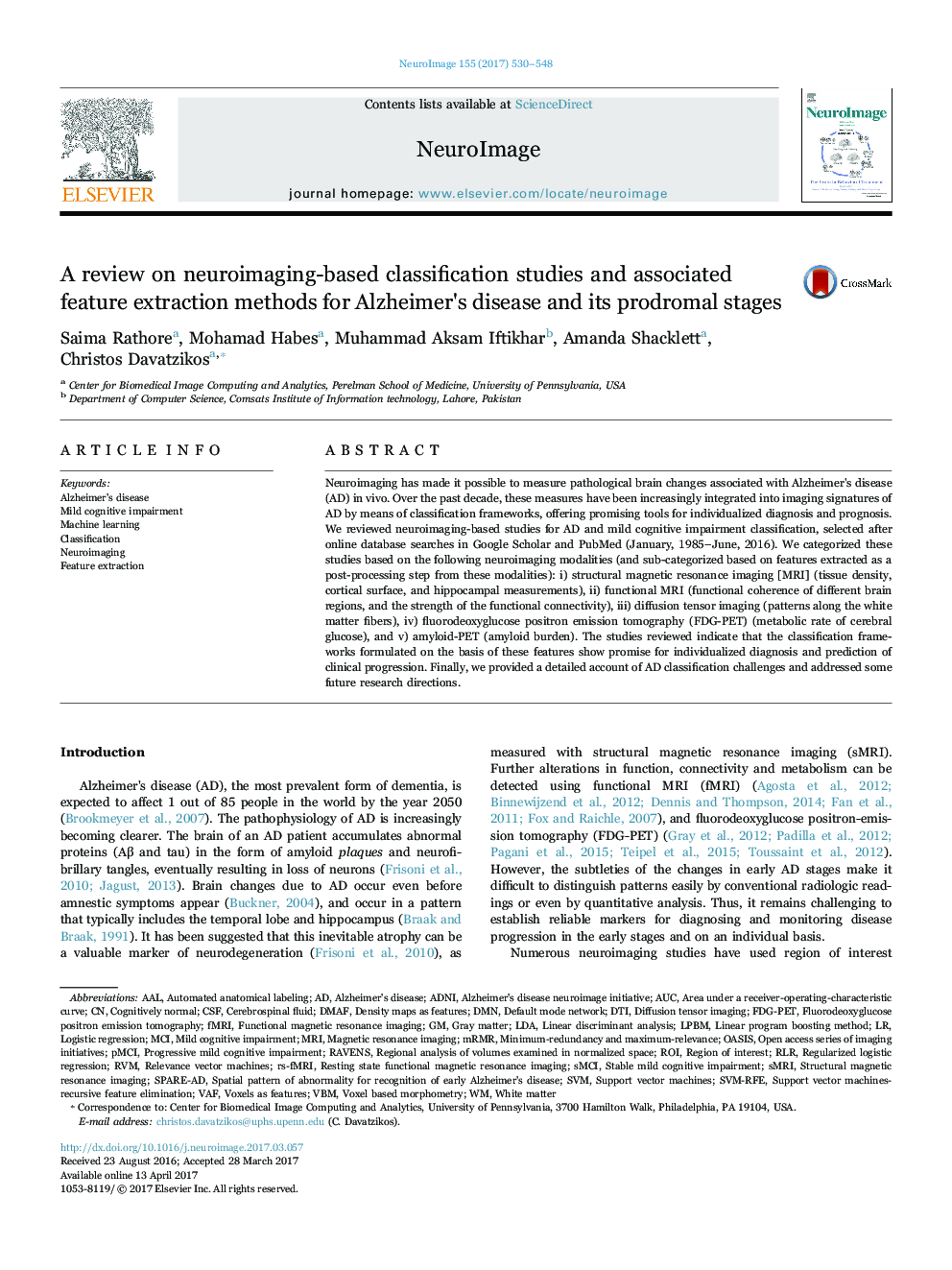| کد مقاله | کد نشریه | سال انتشار | مقاله انگلیسی | نسخه تمام متن |
|---|---|---|---|---|
| 5631159 | 1580855 | 2017 | 19 صفحه PDF | دانلود رایگان |
- We reviewed Alzheimer's disease neuroimaging-based classification studies.
- We covered structural MRI, fMRI, DTI, amyloid-PET, FDG-PET, and multimodalities.
- The reported studies were validated through appropriate cross-validation.
- We categorized the studies based on feature extraction methods.
- We discussed challenges, disparities in experimental conditions and future directions.
Neuroimaging has made it possible to measure pathological brain changes associated with Alzheimer's disease (AD) in vivo. Over the past decade, these measures have been increasingly integrated into imaging signatures of AD by means of classification frameworks, offering promising tools for individualized diagnosis and prognosis. We reviewed neuroimaging-based studies for AD and mild cognitive impairment classification, selected after online database searches in Google Scholar and PubMed (January, 1985-June, 2016). We categorized these studies based on the following neuroimaging modalities (and sub-categorized based on features extracted as a post-processing step from these modalities): i) structural magnetic resonance imaging [MRI] (tissue density, cortical surface, and hippocampal measurements), ii) functional MRI (functional coherence of different brain regions, and the strength of the functional connectivity), iii) diffusion tensor imaging (patterns along the white matter fibers), iv) fluorodeoxyglucose positron emission tomography (FDG-PET) (metabolic rate of cerebral glucose), and v) amyloid-PET (amyloid burden). The studies reviewed indicate that the classification frameworks formulated on the basis of these features show promise for individualized diagnosis and prediction of clinical progression. Finally, we provided a detailed account of AD classification challenges and addressed some future research directions.
Journal: NeuroImage - Volume 155, 15 July 2017, Pages 530-548
